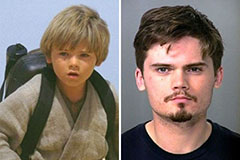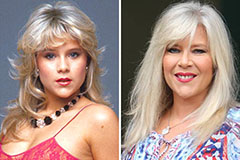Clubfoot, a birth defect that affects the shape of the foot, requires specialized attention. Prompt intervention is crucial for achieving optimal results. A variety of successful treatment are available, spanning from the conventional Ponseti method to contemporary techniques. Treatment typically involves a series of supports, manipulations, and sometimes surgery. Learning about the diverse options available can help parents make informed selections for their child's treatment.
- The thorough assessment by a medical professional is the first step in determining the best approach for each child.
- Parents should actively participate in their child's care and seek clarification to ensure they fully understand the procedure.
- Scheduled follow-up appointments with the specialists are essential for tracking progress and making any necessary adjustments to the treatment.
Importance of a Properly Fitted Ponseti Brace
A properly fitted Ponseti brace functions a essential role in the treatment of clubfoot. It provides gentle correction to the bent foot, guiding it back into a normal shape. By applying consistent pressure in a specific manner, the brace operates to lengthen the contracted tissues and build the muscles. This persistent therapy is important for achieving long-term outcomes and avoiding reoccurrence of the disorder.
Living with Clubfoot: Tips for Wearing Your Brace Comfortablyputting on
Living with clubfoot might be a bit of a challenge, but it doesn't have to sound unbearable. One of the biggest concerns people with clubfoot experience is finding ways to happily wear their brace. But don't worry, there are plenty of tips you can try to ensure get more info your brace feels more bearable.
- Let’s start by choosing the right brace for you. Talk to your doctor or medical professional about different types of braces and which one should be best for your needs.
- Ensure sure your brace fits correctly. A loose brace won’t function, while a snug brace can result in discomfort.
- Utilize your brace as instructed by your doctor. Don't skip any appointments or changes.
- Think about using padding inside your brace to reduce friction and irritation.
- Remain active even while wearing your brace. Gentle exercise can help improve circulation and make your brace feel more manageable.
The Ponseti Method: A Guide to Brace Application and Management
The Ponseti method is a widely recognized approach for treating clubfoot. It involves a series of specialized manipulations followed by the consistent application of a brace. Maintaining the Ponseti method diligently is vital for achieving the best optimal outcomes.
Starting with, your child's doctor will perform multiple manipulations to reshape the feet. These manipulations are completed with a period of using a brace both day and night for three months.
- After the initial bracing period, your child will transition to a shorter application schedule. This typically involves wearing the brace at night and for limited durations during the day.
- Throughout this process, it is important to observe your child's feet and notify their doctor of any concerns or developments.
- Scheduled follow-up appointments are essential to ensure the progress of the Ponseti method.
Correcting Clubfoot with Brace Shoes
Clubfoot orthotics are specialized footwear designed to help treat clubfoot, a congenital condition where the foot is deformed. These adjustable shoes work by gently realigning the foot into its proper shape. By providing consistent pressure, clubfoot orthotics encourage healthy formation of the bones, tendons, and muscles in the foot. They are often used in conjunction with other treatments, such as casting or surgery.
Utilizing clubfoot orthotics is an important part of achieving optimal mobility. These supports allow children to walk more effectively, reducing pain and promoting self-sufficiency. Furthermore, early intervention with clubfoot devices can significantly maximize the child's quality of life and potential.
Extending the Brace: Long-Term Care for Clubfoot
Clubfoot is a condition that affects a child's ankles. While braces are essential in managing clubfoot early on, long-term care goes beyond simply wearing a brace. This involves regular checkups with a orthopedic surgeon to ensure proper development. It also may include exercises and physical therapy to maintain flexibility and prevent long-term problems.
- Children with clubfoot may need to wear braces for several years, even after the initial treatment phase is complete.
- Regular follow-up appointments are crucial to monitor the child's progress and make any necessary adjustments to the treatment plan.
- Early intervention and ongoing care can help children with clubfoot live active and fulfilling lives.
It is important to remember that long-term care for clubfoot goes hand in hand with early treatment. By working closely with healthcare professionals, families can ensure the best possible outcome for their child.
 Jake Lloyd Then & Now!
Jake Lloyd Then & Now! Mike Vitar Then & Now!
Mike Vitar Then & Now! Julia Stiles Then & Now!
Julia Stiles Then & Now! Shannon Elizabeth Then & Now!
Shannon Elizabeth Then & Now! Samantha Fox Then & Now!
Samantha Fox Then & Now!